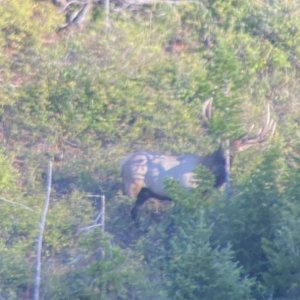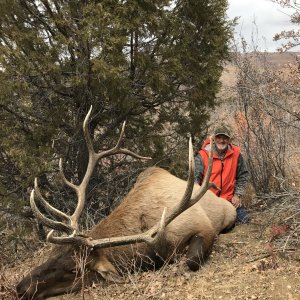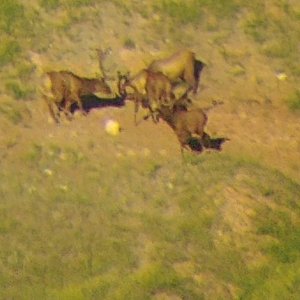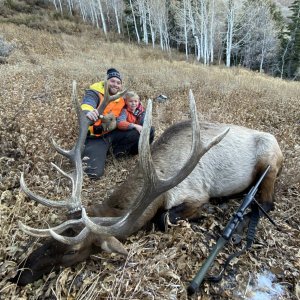swampmule
Active Member
- Messages
- 159
A federal judge in Montana expressed skepticism Tuesday that the Endangered Species Act allows the U.S. Fish and Wildlife Service to remove federal protection of wolves in Montana and Idaho but not in Wyoming.
In a hearing for a suit brought by conservation groups against the federal wildlife agency, U.S. District Judge Donald Molloy told Justice Department attorney Mike Eitel he was having trouble accepting the government's bifurcation of protection rules. Under federal actions, Wyoming wolves are separated from the rest of their ?distinct population segment? in the northern Rockies, Molloy said in his Missoula courtroom.
?I understand the practical argument,? Molloy said. ?I understand the political argument. Those two things are very, very clear. But what I don't understand is the legal argument. That's not very clear.?
Fish and Wildlife?s decision to remove federal protection from a portion of the northern Rocky Mountain gray wolf population violates the Endangered Species Act, conservation groups argued. Lawyers from Earthjustice said that delisting part of the population is grounds for putting all wolves in the northern Rockies back on the threatened and endangered species list. The Jackson Hole Conservation Alliance is among the groups represented by Earthjustice.
In 2009, Fish and Wildlife removed a portion of the Rocky Mountain gray wolf
Act protection in Montana and Idaho. However, because of inadequate state protections for wolves, the agency chose to continue federal protection for gray wolves in Wyoming.
If Molloy rules in favor of Fish and Wildlife?s decision to partially delist the gray wolf population, it could set a precedent for future delistings, allowing the federal government to arbitrarily pick and choose which animals are protected and where, Earthjustice attorney Doug Honnold said after the hearing.
?If the Fish and Wildlife Service can get away with this, the scope of the Endangered Species Act is radically restricted,? Honnold said.
A ruling in favor of conservation groups, however, might put additional pressure on Wyoming to come up with a wolf management plan that will pass muster with Fish and Wildlife. So far, Wyoming?s plans, which have sought to minimize the number of wolves with no protection at all in most of the state, have not met federal standards.
State management plans in Idaho and Montana also are problematic, conservation lawyers said. The plaintiffs fear that the wolf management plans in Montana and Idaho do not adequately protect the delisted wolves, though both states assured the judge that their states? laws and regulations require them to manage viable wolf populations. Wolf hunts were held in both states last year. Seventy-three wolves were killed in Montana, and 185 were killed in Idaho.
The conservation groups also argued the size of the gray wolf population is not large enough to allow for sustainable population growth, claiming that in order for the species to maintain genetic diversity, the population must reach at least 2,000 animals. Federal guidelines require 15 breeding pairs and 150 wolves in each state.
There are about 1,700 gray wolves in the Rocky Mountain region, including at least 843 wolves in Idaho, 524 in Montana and 320 in Wyoming.
?By every biological measure, the region?s gray wolf population is fully recovered,? an April U.S. Fish and Wildlife Service report said. Conservation groups disagree.
?We hope the wolves in Idaho and Montana will be returned to the endangered species list, the recovery plan for the northern Rocky Mountain wolves is re-examined and a new recovery plan that ensures the recovery of wolves over the long term is created,? said Natural Resources Defense Council representative Matt Skoglund.
Federal lawyers argued that because a significant portion of the Rocky Mountain gray wolf population inhabits Wyoming, the partial delisting is justified. Without federal protection, the killing of gray wolves would be legal throughout most of the state.
The Wyoming wolf management plan designates nearly 90 percent of the state a ?predator zone? in which gray wolves can be shot on sight without a license anytime of the year.
The population is one of the most well-studied and best-understood in the world, and the conclusion 15 years after reintroduction is that wolves will be continue to survive under state management, Eitel told Molloy.
Others, including Bob Wharff, executive director of the Wyoming chapter of Sportsmen for Fish and Wildlife, argue that individual states should be given the responsibility of managing wildlife within their borders. Wharff, however, does not believe this will be the outcome of this lawsuit.
?It's a tragedy that Idaho and Montana will lose the opportunity to manage the wildlife as they see fit,? he said. ?But in part, it's their fault for being so critical of Wyoming?s management plan. As a whole, we all lose when we have a species listed when that listing isn't warranted.?
A similar lawsuit is under way in Wyoming. Arguments were heard by U.S. District Judge Alan B. Johnson in federal court in Cheyenne on Jan. 29 to address the state of Wyoming?s request that Fish and Wildlife accept the state?s management plan. A decision from Johnson is pending.
In a hearing for a suit brought by conservation groups against the federal wildlife agency, U.S. District Judge Donald Molloy told Justice Department attorney Mike Eitel he was having trouble accepting the government's bifurcation of protection rules. Under federal actions, Wyoming wolves are separated from the rest of their ?distinct population segment? in the northern Rockies, Molloy said in his Missoula courtroom.
?I understand the practical argument,? Molloy said. ?I understand the political argument. Those two things are very, very clear. But what I don't understand is the legal argument. That's not very clear.?
Fish and Wildlife?s decision to remove federal protection from a portion of the northern Rocky Mountain gray wolf population violates the Endangered Species Act, conservation groups argued. Lawyers from Earthjustice said that delisting part of the population is grounds for putting all wolves in the northern Rockies back on the threatened and endangered species list. The Jackson Hole Conservation Alliance is among the groups represented by Earthjustice.
In 2009, Fish and Wildlife removed a portion of the Rocky Mountain gray wolf
Act protection in Montana and Idaho. However, because of inadequate state protections for wolves, the agency chose to continue federal protection for gray wolves in Wyoming.
If Molloy rules in favor of Fish and Wildlife?s decision to partially delist the gray wolf population, it could set a precedent for future delistings, allowing the federal government to arbitrarily pick and choose which animals are protected and where, Earthjustice attorney Doug Honnold said after the hearing.
?If the Fish and Wildlife Service can get away with this, the scope of the Endangered Species Act is radically restricted,? Honnold said.
A ruling in favor of conservation groups, however, might put additional pressure on Wyoming to come up with a wolf management plan that will pass muster with Fish and Wildlife. So far, Wyoming?s plans, which have sought to minimize the number of wolves with no protection at all in most of the state, have not met federal standards.
State management plans in Idaho and Montana also are problematic, conservation lawyers said. The plaintiffs fear that the wolf management plans in Montana and Idaho do not adequately protect the delisted wolves, though both states assured the judge that their states? laws and regulations require them to manage viable wolf populations. Wolf hunts were held in both states last year. Seventy-three wolves were killed in Montana, and 185 were killed in Idaho.
The conservation groups also argued the size of the gray wolf population is not large enough to allow for sustainable population growth, claiming that in order for the species to maintain genetic diversity, the population must reach at least 2,000 animals. Federal guidelines require 15 breeding pairs and 150 wolves in each state.
There are about 1,700 gray wolves in the Rocky Mountain region, including at least 843 wolves in Idaho, 524 in Montana and 320 in Wyoming.
?By every biological measure, the region?s gray wolf population is fully recovered,? an April U.S. Fish and Wildlife Service report said. Conservation groups disagree.
?We hope the wolves in Idaho and Montana will be returned to the endangered species list, the recovery plan for the northern Rocky Mountain wolves is re-examined and a new recovery plan that ensures the recovery of wolves over the long term is created,? said Natural Resources Defense Council representative Matt Skoglund.
Federal lawyers argued that because a significant portion of the Rocky Mountain gray wolf population inhabits Wyoming, the partial delisting is justified. Without federal protection, the killing of gray wolves would be legal throughout most of the state.
The Wyoming wolf management plan designates nearly 90 percent of the state a ?predator zone? in which gray wolves can be shot on sight without a license anytime of the year.
The population is one of the most well-studied and best-understood in the world, and the conclusion 15 years after reintroduction is that wolves will be continue to survive under state management, Eitel told Molloy.
Others, including Bob Wharff, executive director of the Wyoming chapter of Sportsmen for Fish and Wildlife, argue that individual states should be given the responsibility of managing wildlife within their borders. Wharff, however, does not believe this will be the outcome of this lawsuit.
?It's a tragedy that Idaho and Montana will lose the opportunity to manage the wildlife as they see fit,? he said. ?But in part, it's their fault for being so critical of Wyoming?s management plan. As a whole, we all lose when we have a species listed when that listing isn't warranted.?
A similar lawsuit is under way in Wyoming. Arguments were heard by U.S. District Judge Alan B. Johnson in federal court in Cheyenne on Jan. 29 to address the state of Wyoming?s request that Fish and Wildlife accept the state?s management plan. A decision from Johnson is pending.















